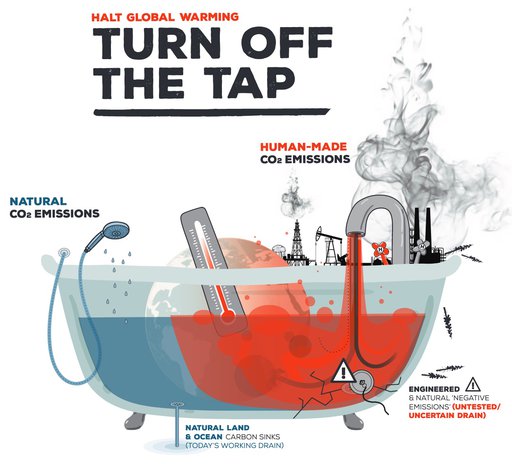What's wrong with planting trees?
A critical look at Net Zero, offsets, REDD+ and "Nature-based Solutions".
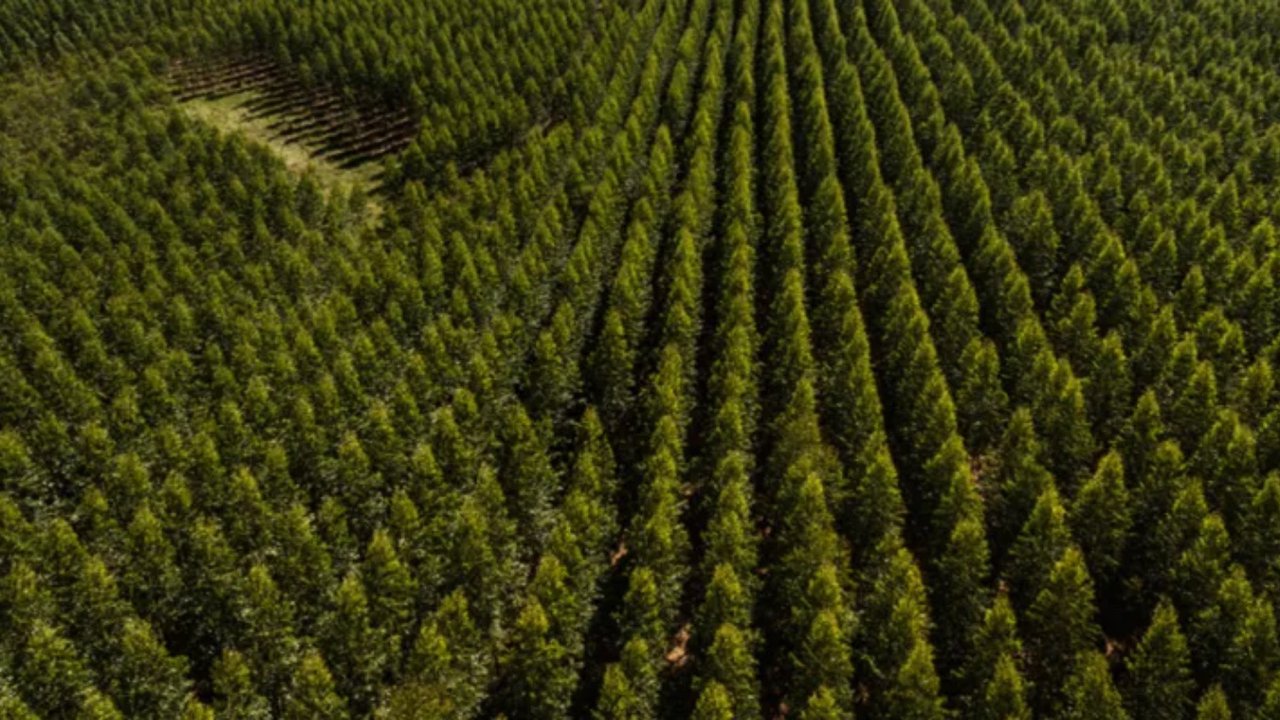

Main thing it's green? On paper, climate neutrality can also be achieved through monoculture plantations. At the same time, the fossil fuel industry adorns itself with beautiful images of "Natural Climate Solutions" Image sources: REDD Monitor, OGCI (Oil and Gas Climate Initiative).
Countries, cities and companies around the world are setting targets to become climate neutral by a certain date. The EU currently envisions climate neutrality only by 2050. Climate justice movements such as XR or Fridays for Future are calling for climate neutrality (or "Net Zero") much earlier, by 2025 or 2030.
However, numerous scientists and activists have long criticized that misunderstood climate neutrality obscures the real causes of ecological crises and intensifies global injustices instead of ending them. What is the truth of this criticism and why should we as activists take it seriously?
To keep the dangerous global temperature rise below 1.5°C and prevent the catastrophic crossing of climate tipping points, greenhouse gas emissions must be reduced quickly and drastically. We face the huge challenge of preserving the life support for many generations to come, stopping the destruction of natural habitats, and at the same time overcoming massive global injustices.
In addition to halting deforestation, protecting terrestrial and marine ecosystems, and switching to more climate-friendly forms of agriculture, this requires, above all, a complete end of burning fossil fuels as quickly as possible.
In the Paris Climate Agreement, the countries agreed that the global temperature increase should remain "well below 2°C" - for that, "climate neutrality" or "Net Zero" is to be achieved by the middle of this century at the latest. The industrialized countries of the Global North, which have contributed most to the climate crisis, need to reduce their greenhouse gas emissions faster than countries of the Global South. The goal is to achieve a balance between the remaining greenhouse gas emissions and their reduction. In doing so, justice and the eradication of poverty should lead to a better life for all people worldwide.
But what does Net Zero mean in practice under current conditions? Are climate neutrality and the various Net Zero targets an important, necessary step toward phasing out fossil fuels and achieving an ecological and just transformation? Do they help to stop the violence and injustice associated with fossil fuel burning and habitat destruction? Or does a demand for climate neutrality slow down these processes and allow business as usual to continue rather than real, effective change? The debates about this are very complex, contradictory and often difficult for lay people to understand.
So let's take a closer look at the strategies and measures discussed in international climate policy, and take a critical look at the real consequences they may have.
What exactly does climate neutrality/net zero mean?
The term climate neutrality can be understood very broadly. Most often, it refers to a state in which the atmospheric balance is not changed and in which no net emission of greenhouse gases happens. "Net" means here, that emissions emitted anywhere are offset (compensated) by saving an equal amount of emissions elsewhere (e.g., by using renewable energy sources instead of fossil fuels), or when CO2 is absorbed by trees, soils, or oceans.
For simplicity, we usually talk about CO2 in the first place, even though there are other greenhouse gases, some of which have a much stronger effect, such as methane or nitrous oxide. In climate impact analyses, they are usually converted into CO2 units.
We can also think of the basic concept of "Net Zero" as an equation: on one side, greenhouse gases are emitted; on the other side, the same amount of greenhouse gases is removed from the atmosphere. To reach zero, emissions on one side of the equation should not be larger than the amount of greenhouse gases removed from the atmosphere over the same period on the other side.
At first glance, the principle seems quite simple. However, the devil is in the details here and the different methods of achieving Net Zero need to be looked at more closely, as they work very differently and also have very different effects in the real world.
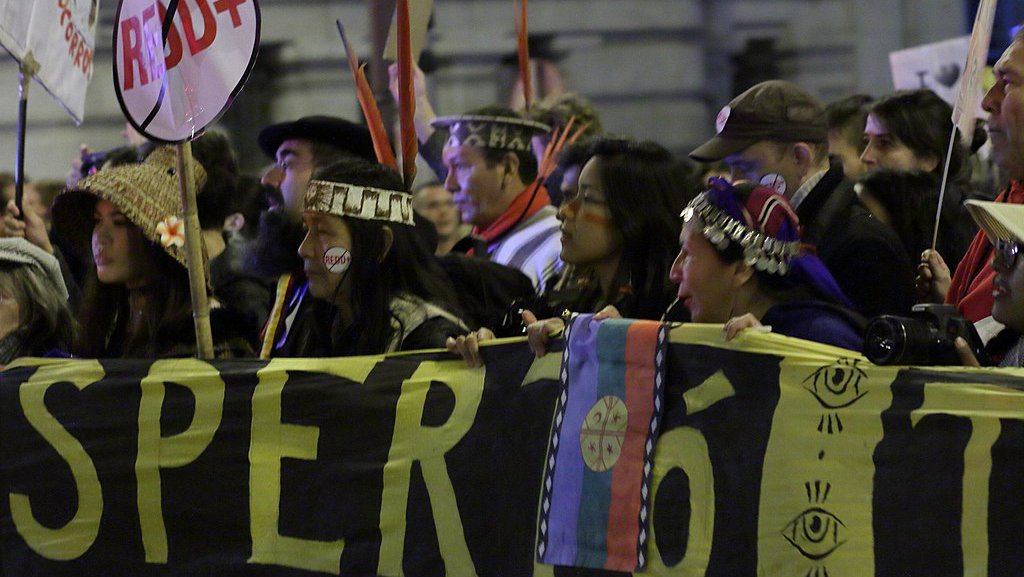
Mapuche protest against REDD+ at the UN Climate Conference in Madrid 2019.
Image source: Wikimedia Commons, Malopez 21, CC BY-SA 4.0
The climate policy toolbox - what proposals are on the table?
At world climate summits and in various other fora, discussions have been going on for a very long time about different strategies for reducing greenhouse gas emissions. The most effective way to stop emissions is, of course, to leave fossil fuels in the ground, to reduce overall energy consumption and cover it with renewable energy. However, the global industrial economy is still largely based on burning fossil fuels, the rollout of renewable energy is not happening fast enough, and overall energy demand continues to rise. Corporations that generate their profits from coal, oil and gas, and industries that rely on fossil fuels, claim they want to reduce their emissions. But they argue that there are emissions that are very difficult to replace or avoid. So the emissions that are supposedly difficult to avoid should first be offset to get to zero as a result. Various tools are proposed for this purpose:
One strategy that exists already for a very long time is emissions trading. In short, emissions trading means that it is possible for various actors, such as countries or companies, to take less expensive reduction measures abroad in order to achieve their own climate targets at home. Through emissions trading, emissions avoided abroad can be purchased as emissions credits or certificates (known as "carbon credits") on global carbon markets and counted toward one's own targets. Under this logic, an EU country or corporation, for example, can buy emission reductions in countries of the Global South, thereby reducing its own emissions on paper - while continuing to emit the corresponding amount of greenhouse gases.
This balancing is also called climate compensation or "offsets". There are various ways in which offsets are generated: on the one hand, by avoiding or reducing emissions, e.g. when renewable energies are used instead of fossil fuels.
Other possibilities for offsets are measures that cause CO2 to be stored in so-called carbon sinks. Natural carbon sinks are e.g. forests, peatlands or humus-rich soils. Classic compensation measures are, for example, reforestation or renaturation of peatlands. For permanent storage, it must be ensured that the carbon does not soon return to the atmosphere - but in many cases there is no guarantee of this.
REDD+ ("Reducing Emissions from Deforestation and Forest Degradation") has long been a much-used concept. It is originally intended to prevent emissions caused by land-use changes, especially deforestation or forest degradation in tropical countries. To offset deforestation, compensation is paid to national governments and local actors in the affected countries. In addition to forest protection, the reforestation of destroyed forest areas is also to be encouraged.
However, REDD+ was met with much resistance from numerous Indigenous and smallholder communities, particularly in countries of the Global South. Criticism of REDD+ includes, for example, uncertainties in the traceability and measurability of the amounts of CO2 actually stored. On the other hand, the type of reforestation is not precisely defined, so monoculture tree plantations can also be counted as REDD+. Land rights and self-determination of Indigenous and smallholder communities are also not automatically safeguarded in REDD+ projects, resulting in evictions or restrictions on traditional land use.
After many years of massive protest against REDD+, so-called "Nature-based Solutions / Natural Climate Solutions" (NBS/NCS) are increasingly being promoted. Both terms refer to measures that, on the one hand, are intended to mitigate the consequences of the climate crisis, such as flooding, and at the same time serve as natural carbon sinks (e.g. mangrove forests). NBS are said to be an improvement over REDD+ because they focus more on protecting biodiversity and working with local communities. But here, too, there is criticism because climate-damaging corporations have discovered the less problematic term for themselves and are now relying on it to enable further compensation for their emissions.
In addition to solutions based on natural carbon sinks, there are also discussions about still speculative technologies to create "negative emissions," i.e., to remove greenhouse gases that have already been released from the atmosphere. So-called carbon capture and storage (CCS) methods promise to remove CO2 from the air or water and then store it in underground reservoirs. Some research is being done on capturing CO2 directly at the site of fossil fuel combustion and then storing it in underground reservoirs (direct carbon capture technologies).
In the BECCS method (bioenergy with carbon capture and storage), biomass, e.g. in tree plantations, is first to absorb CO2 and then be burned industrially, with the resulting CO2 then being captured and also stored underground.
With both methods, it is controversial whether enough of suitable storage sites can be found in which the CO2 can be permanently stored. In the case of BECCS, there is also the problem of the enormous amount of land required for the plantations, which would endanger biodiversity and compete with food production.
These technologies cannot yet be implemented on a large scale. Based on the current state of research, it is still completely unclear whether they will ever be technically feasible and also economically viable. Relying on them is therefore dangerous speculation and an incalculable risk for the climate.
Criticism of the net-zero concept and CO2 offsets
So what is the problem with relying heavily on offsets but continuing to burn fossil fuels in an effort to achieve Net Zero?
A coalition of organizations including Friends of the Earth International, La Via Campesina, Indigenous Environmental Network, Climate Justice Alliance, and others, representing many voices from the Global South and Indigenous communities, recently released a report, Chasing carbon Unicorns. This report is part of a long line of criticisms that have been made for many years by activists in the Global South, Indigenous and smallholder organizations, and scientists. The organizations call for a "Real Zero" rather than "Net Zero" policy and criticize offsets as a distraction from the real causes of the climate crisis.
Biologist and climate and biodiversity compensation expert Jutta Kill criticizes offsets and Net-Zero promises as a kind of indulgence trade, an accounting based on hypothetical assumptions that often cannot be proven. She says this stalls necessary societal debates about how we should live and operate the economy without further destroying the Earth's ecosystems, preventing effective and equitable transformation.
The World Rainforest Movement, which works closely with Indigenous people and people living off the forest and which internationally campaigns for their rights, has collected numerous examples of human rights violations in climate compensation projects - here, too, it becomes visible how strongly nature-destroying corporations try to give themselves a green image by engaging in REDD+, offsets and Natural Climate Solutions, while continuing to destroy and pollute.
Further criticism was raised several times in the Rights of Nature Tribunal, which is working to establish Nature's rights in international legislation. The Tribunal condemned REDD+ as a violation of the rights of nature and as contradictory to many worldviews of Indigenous cultures that reject putting a price tag on nature.
The People's Demands for Climate Justice and #OurNatureIsNotYourSolution campaigns, signed by numerous environmental and human rights organizations, many from the Global South, also rejected "false solutions" and greenwashing by Net Zero, calling instead for a just ecological transformation and the protection of Indigenous land rights.
Critics of Net Zero also say that it shifts responsibility for industrialized countries' pollution to those who contribute least to the climate crisis - land and ecosystems in the Global South are often used to offset emissions that are largely generated in the Global North. This has little to do with justice.
So-called climate-neutral products or services do not automatically prevent climate heating. They mostly rely on offsets, so fossil fuels continue being extracted and burned with all the harmful consequences and greenhouse gases continue to be released. Offsetting often only takes place on paper and is difficult to trace.
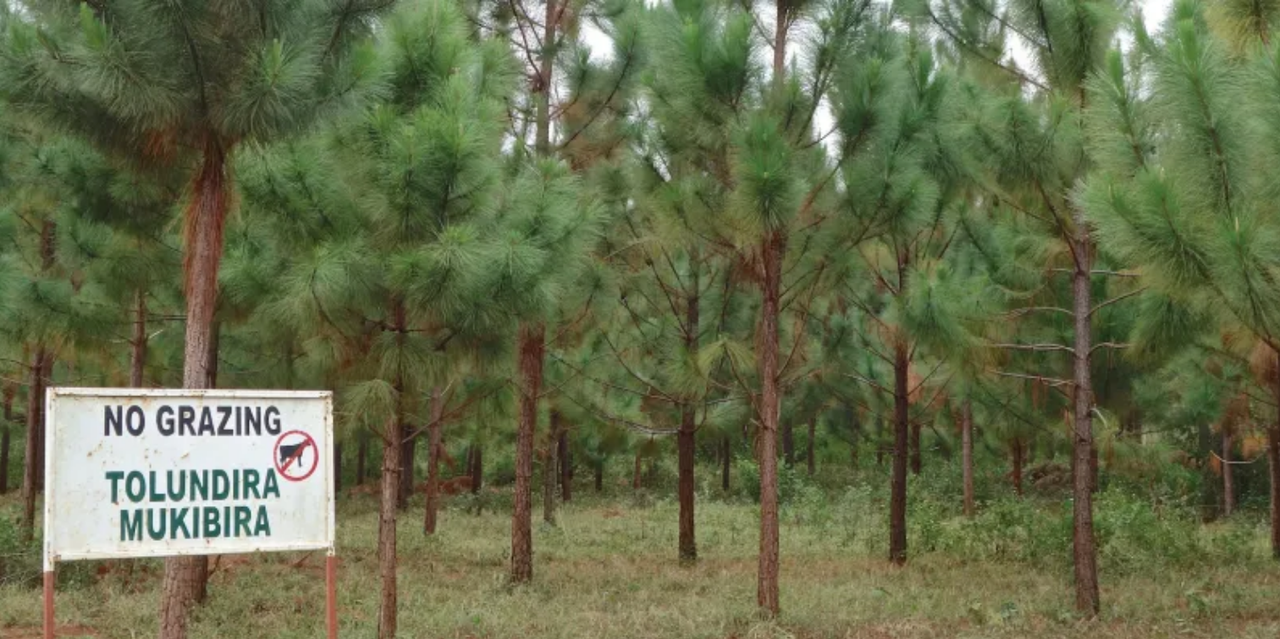
Norwegian company's Green Ressources tree plantation in Uganda, image source: REDD-Monitor
Consequences for local communities
If we don't want to reduce climate policy to the mere movement of CO2 molecules, but also want to look at the social dimension and advocate for global justice, against racism and colonialism, we must take a close look at the real consequences of climate compensation for the people affected. If we are to speak out for human rights and justice, we must support only those measures that are desired by and beneficial to local people and that respect their land rights as well as their cultural self-determination.
What are the concrete effects of climate compensation projects, especially in countries of the Global South? Of course, there are many very different projects. But it is clear that not all measures that lead to "climate neutrality" on paper are good for the local population affected.
Let's first look at projects that claim to compensate by avoiding emissions. Measures that aim for Net Zero through CO2 reduction are not in all cases environmentally friendly or socially just. For example, the construction of large dams for renewable power generation often floods pristine ecosystems and displaces local communities from their land.
Biofuels, which are often claimed to reduce emissions as a replacement for fossil fuels, can have severe impacts: large monoculture plantations are created to grow the crops needed to produce biofuels such as wood pellets or bio-ethanol, destroying sensitive ecosystems. Numerous cases of land grabbing, massive land use changes and the loss of fertile land that is actually needed for food production have been and are being documented in countries of the Global South.
Also with REDD+ and Nature-based Solutions, many cases of land grabbing and displacement have been documented (some of them, for example, in the Environmental Justice Atlas). Often, people were no longer allowed to practice their traditional forms of agriculture because compensation areas were established on the land they used. Self-sustaining smallholder farmers have very low greenhouse gas emissions by global standards. However, in some REDD+/NBS projects, they and their traditional agriculture are defined as culprits of deforestation, their land is "protected" and used as compensation land for corporations, mostly to offset emissions in the Global North or deforestation for industrial agriculture (e.g. for palm oil plantations).
The self-determined smallholder land use is then controlled from the outside, up to land grabbing - everything to meet the climate neutrality goals of corporations in the Global North, and to compensate for the emissions that the affected people in the Global South have not caused at all!
After massive criticism of these concepts, various guidelines have been developed, e.g. the Global Standard of the IUCN or the NbS Guidelines of the University of Oxford and by some NBS actors who have come under criticism. This is certainly an improvement in terms of human rights and biodiversity. The principle of FPIC (Free, Prior and Informed Consent) should of course also apply to climate solutions. However, there is criticism that these guidelines have no legal binding, thus they are purely voluntary for project operators. There is therefore no guaranteed protection against human rights violations and land grabbing, and there are also repeated cases of fraud, where projects look good on the outside, but in reality lead to division in the local communities and the loss of self-determination.
The mere fact that there is so much injustice in connection with climate offsets should motivate us to take a critical look at Net Zero and to look closely which measures make sense and which do not. But also from a scientific point of view, the focus on Net Zero contains some serious errors in thinking.
Fast and slow - two different carbon cycles
Offsetting through reforestation or renaturation with the goal of "climate neutrality" confuses two carbon cycles of different speeds. The geological cycle, in which carbon is stored in coal, oil and gas, is extremely slow: it takes millions of years and, in terms of human time, has no noticeable impact when it comes to removing excess greenhouse gases from the atmosphere.
The much faster, active carbon cycle, in which CO2 is stored in biomass (like trees, algae, or peatlands, for example) and in oceans and soils, operates on much shorter time scales. The CO2 is absorbed, stored in e.g. trees and released again as soon as the tree dies and is decomposed by microorganisms or when it is destroyed by forest fire.
Trees are part of the fast carbon cycle and can at best store carbon temporarily. However, the absorption capacity of forests and other natural ecosystems such as peatlands and oceans is limited, and storage will eventually cease to function if the overall balance is disturbed by more and more greenhouse gases from fossil combustion.
The global economy is releasing more and more fossil CO2 that was bound in coal, oil and gas for millions of years. In addition, the destruction of forests and swamps for industrial agriculture also releases the greenhouse gases bound there.
If we rely on ecosystems to absorb these huge amounts, while greenhouse gases from fossil sources continue to be released, the calculation will eventually no longer work. Forests in many parts of the world are already transforming from carbon sinks to carbon sources (e.g. in Canada or the Amazon), i.e. due to the climate changes that have already occurred and their consequences such as droughts, forest fires or pest infestations, the forests release more CO2 than they absorb.
Thus, there is no guarantee at all that the CO2 will not only be temporarily stored for a short time, but really be permanently removed from the atmosphere. If we continue to burn fossil fuels, more and more CO2 will circulate in the atmosphere, further heating up the climate.
Planting trees can in itself be helpful in mitigating the effects of deforestation that has already occurred and in revitalizing areas that have been destroyed by deforestation in the past (provided that native trees and diverse, natural forests are planted rather than monocultures). Healthy forests improve soils, the water balance, and microclimate, combat soil erosion, provide homes for numerous plant and animal species, and serve as sources of healthy food and herbal medicine for local communities. And, of course, they also store CO2 - though globally, there would be no land available on such a large scale to permanently absorb all the CO2 that continues to be released by the fossil economy.
Focusing purely on CO2 - a dangerous simplification of the ecological crises
Focusing only on CO2 emissions ignores other environmental impacts, such as biodiversity loss, forest destruction, erosion and stress on fertile soils, pollution of oceans and terrestrial ecosystems.
This one-sided fixation suppresses the deeper causes of the climate crisis: the current global economic system, exploitation of people and nature for profit interests, and the industrialized countries' excessive use of resources. But the way we describe a problem determines what solutions we consider. Measures to achieve climate neutrality are built on prioritizing greenhouse gases over other factors.
The prioritization of CO2 results in other aspects such as biodiversity, resource conservation, and equity taking a lower priority instead of being at the forefront and guiding action. It is becoming apparent that a one-sided focus on climate neutrality will ultimately prevent much-needed changes in policy and mentality and the overcoming of oppression systems that still have too much power in the world. Meaningful solutions must address the climate crisis while prioritizing human rights, solidarity, justice and a good life for all.
Forests, land and ecosystems are much more than the carbon they store - they are places full of life, livelihoods for local communities, places with cultural and spiritual significance. The financialization of nature, of which climate offsets are a part, does not do justice to this significance - the uniqueness and diversity of living ecosystems cannot be reduced to the carbon stored in them or other isolated functions.

Founding members of Markets for Natural Climate Solutions at COP25 in Madrid,
Image source: REDD Monitor
Strategies of distraction
More and more companies and governments are promising to become climate neutral or reach Net Zero. But Net Zero alone says nothing about how this was achieved - through real reductions in fossil energy, or through climate compensation and emissions trading?
Powerful players who contribute most to the climate crisis, such as oil, coal and gas producers, mask their intentions to continue extracting fossil fuels behind promises to get to Net Zero. They influence international climate policy and try to secure their own profits for as long as possible. Shell, for example, has itself proudly proclaimed to have influenced the Paris Agreement. They publish glossy brochures with beautiful landscapes that they want to protect, but at the same time destroy nature in other places.
The responsibility of corporations to stop their emissions and other destruction of nature is shifted out through emissions trading and offsets, they use these tools to avoid the necessary control through legislation. Unfortunately, some large conservation organizations are also part of this game, as a look at the website of The Nature Conservancy shows, which partners with Amazon, Coca-Cola, Nestle and Shell, among other polluting companies.
Networks where conservation NGOs and large corporations cooperate (e.g., "Nature4Climate, which lists WBCSD as a partner, an association of numerous large corporations) and promote concepts such as NBS/NCS through beautiful nature pictures, distract from the fact that a rapid phase-out of fossil fuels is necessary and also possible to avert the worst consequences of the climate crisis.
While countries struggle to find a common strategy to mitigate the crisis at annual climate conferences and have so far failed to achieve drastic and rapid emission reductions worldwide, offsets are becoming a highly demanded commodity on global markets. Governments and international climate policy makers are also planning to promote carbon markets, which will play an important role in the upcoming climate and biodiversity summits this year. Under these circumstances, the increase in Net Zero commitments by companies and governments is leading to growing demand for offsets.
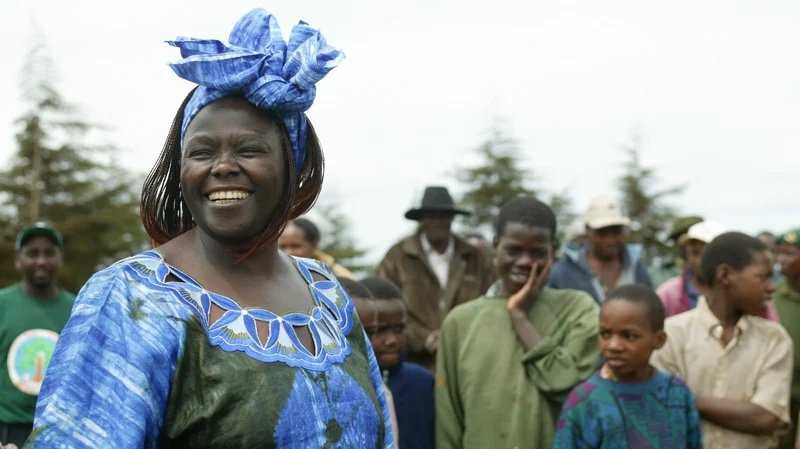
Prof. Wangari Maathai, Nobel Peace Prize winner and founder of the Green Belt Movement.
Image source: All you ever wanted to know about ecofeminism, Asmae Ourkiya
Planting trees can be done better: grassroots movements for healthy forests and for human rights
Are there also good projects that serve the climate as well as local people and biodiversity? What would be real, meaningful alternatives to the current market-based approaches?
Particularly in the Global South, and especially among Indigenous communities on all continents, many different ways of living with and from nature have existed for a long time, serving the people while preserving atmospheric balance and biodiversity. Traditional land use systems generate natural carbon stores, provide livelihoods for numerous communities, create landscapes with high biodiversity, and are full of cultural and spiritual meaning.
But even where deforestation had progressed very far, local communities in many places have managed to regenerate nature while securing a good living for themselves with nature-based land use.
A well-known example is the grassroots movement The Green Belt Movement, founded in 1977 by Prof. Wangari Maathai together with the National Council of Women of Kenya and women's groups in Nairobi and its rural surroundings.
Prof. Maathai was awarded the Nobel Peace Prize in 2004 for her life's work. She spent her life campaigning for the protection of forests and, together with the Green Belt Movement, supported the planting of millions of trees.
The Green Belt Movement has been carrying out reforestation projects in Kenya and other African countries for decades, planned by the local communities according to their needs. The movement promotes local ecological agriculture and sustainable forest use while empowering rural women.
Numerous other examples from different countries are shown by the Global Forest Coalition, which has been advocating for socially just and effective forest policies and land rights for over 20 years, working with numerous Indigenous and smallholder communities on different continents.
A complete phase-out of fossil fuels, industrial agriculture and other life-destroying technologies, Real Zero instead of Net Zero, and real climate justice are possible and necessary. Fossil fuels must stay in the ground. Instead of relying on false corporate solutions, we need real people-centered solutions to the climate crisis that restore justice and put the focus back on the coexistence of people and nature. Corporate interference and capture of climate negotiations and the financialization of nature will not stop the climate crisis. Instead, secure land rights and the self-determination of local communities strengthen biodiversity, food security, and a good life for future generations around the world.
Sources:
We would like to share the materials collected on this page in the spirit of support and solidarity.
As a small group, we unfortunately do not have the capacity to research all the contacts and write to the authors, creators and contributors of the materials listed on this page and explicitly ask for their permission to be linked in this context.
If you are the author, creator or contributor of any of these materials and do not agree with their use in this context, please let us know at presse(at)extinctionrebellion.de and we will remove it.
VIDEOS
Green Finance Observatory: The new finance markets for nature, explained to my grand mother
Indigenous Environmental Network: Carbon Pricing is a False Solution to Climate Chaos
REDD and Forests Case Verdict - Tom BK Goldtooth
Ken Henshaw on REDD+ (Rights of Nature Tribunal)
Webinar: Why the climate crisis can't be reduced to a focus on carbon with Larry Lohmann
Global Alliance against REDD+: Videos
FERN: The story of REDD: A real solution to deforestation?
Heinrich-Boell-Foundation on BECCS
Global Forest Coalition: Examples of rights-based, socially-just forest conservation
Wangari Maathai & The Green Belt Movement
Taking Root: Film Trailer (Film about the Green Belt Movement)
ARTICLES
World Rainforest Movement Bulletin on "Nature-based Solutions"
Global Forest Coalition: Campaign #OurNatureIsNotYourSolution
International Rights of Nature Tribunal: REDD AND FORESTS CASE
10 myths about net zero targets and carbon offsetting, busted
Negative CO2 emissions cannot replace rapid reductions. By Kate Dooley
REDD: The pitfalls of market-compliant forest conservation. By Jutta Kill
Environmental Conflicts on Carbon offsets - Environmental Justice Atlas
We Stand Together With Nature: The 4 principles for NBS
World Rainforest Movement: Examples of harm to local communities through tree plantations
REDD Monitor: Do the four principles on Nature-Based Solutions mean “No offsets”? By Chris Lang
Indigenous Environmental Network: Campaign "Sky Protectors" agains forest carbon offsets
People's Demands for Climate Justice
Carbon markets will not help stop climate change. By Dennis Clare
Dangerous Distractions by Nathan Thanki
Shell Oil Executive Boasts That His Company Influenced the Paris Agreement. By Kate Aronoff
Canada's forests actually emit more carbon than they absorb. By Robson Fletcher
Nature-based Solutions Initiative, University of Oxford
The Four Guidelines for Nature-based Solutions
IPCC: Worlds Apart. A Story of three possible warmer worlds
Natural Climate Solutions by the Oil and Gas Climate Initiative
Can 'nature-based solutions' be more than a buzzword? By Michael Igoe
IN-DEPTH READING
Carbon Pricing, V1: A Critical Perspective for Community Resistance. By IEN and CJA
Carbon Pricing, V2A Popular Education Toolkit for Community Resistance By IEN and CJA
Carbon Markets Watch: Carbon markets 101. THE ULTIMATE GUIDE TO GLOBAL OFFSETTING MECHANISMS
REDD: A Collection of Conflicts, Contradictions and Lies. By Jutta Kill, World Rainforest Movement.
FERN: Will carbon markets ever deliver for southern government, forests and people?
The Oxford Principles for Net Zero Aligned Carbon Offsetting
The Oil and Gas Climate Initiative on Natural Climate Solutions

